Mountain School: a campus in the great outdoors
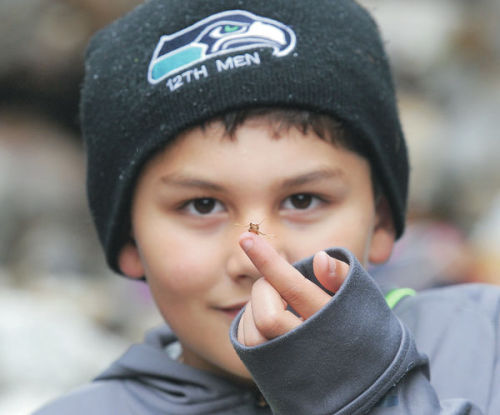
By Vince Richardson for the Skagit Valley Herald
DIABLO LAKE — To truly learn about the great outdoors, one has get out into it and experience the sights, sounds and smells.
Touch the bark, feel the moss, hear the birds, feel the breeze.
Children who attend Mountain School can do just that.
The school is a 7 million-acre campus with the North Cascades Institute’s Environmental Learning Center serving as its lecture hall.
Mountain School runs from the middle of September to the middle of November, and from late February to mid June.
“We are very fortunate to be able to offer this program,” said program coordinator Chris Kiser. “It’s an opportunity for students to make friends and learn about themselves as well as the outdoors. They learn all about producers, consumers and the ecosystem.”
Mountain School packs a lot into three days. The focus is on science, and the natural and cultural history of the North Cascades.
Days are spent hiking the nine miles of trails around the Environmental Learning Center. Activities along the trail introduce students to ecosystems and provide up-close looks at diverse ecological communities. Topics of study include wildlife of the North Cascades, biodiversity, food webs, glaciers and geology, watersheds, cultural history, ethnobotany and forest ecology.
Big Lake Elementary School teacher Elaine Glason has been taking students to Mountain School since 1998.
“I have never had a student say they wish they’d never done it,” said Glason.
On a recent Mountain School session, Cecilia Trejo, a 10-year-old student of Glason’s, spent time checking out a stream as it rushed around a massive boulder at the base of waterfall.
“It’s awesome,” she said. “I have learned so much about things like rocks. There are igneous, metamorphic and sedimentary. There is so much to learn.”
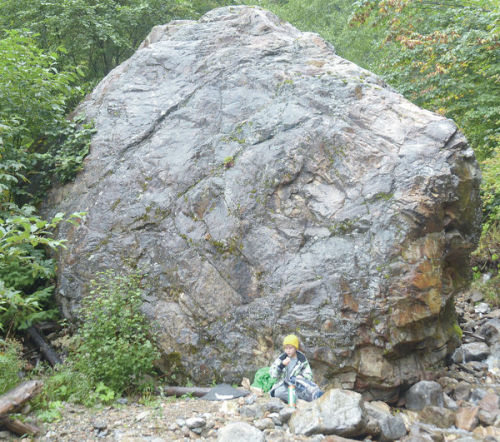
Before there was an Environmental Learning Center, Mountain School was held in canvas tents in Newhalem.
While the facilities have changed, the expressions on the faces of Glason’s fifth-grade students are no different than the ones she saw back in the 1990s.
Glason took over the trips when another teacher left the school. After she retires at the end of the school year, she’ll pass along the responsibility to another.
“It is so wonderful for the kids,” she said. “And honestly, I really get to know my kids when we come up here and they get to know the outdoors.
“It is just awesome. It’s important for these kids at this age to get out and start learning about environments and habitats in order to develop an affinity for the outdoors and its conservation. They are impressionable and they need to realize they have a huge impact. They have the opportunity to take it all in and see it through their own eyes.”
Glason and Kiser agree that the school’s night hike is a hit with the kids.
“Seeing the forest at night is something completely different,” Glason said. “You can see how intent they are on listening to the sounds. That is a huge piece of the educational puzzle. Then there is the solo hike where students pick up and walk by themselves.”
On the last day of Mountain School, groups hike to a waterfall in the Sourdough Creek drainage.
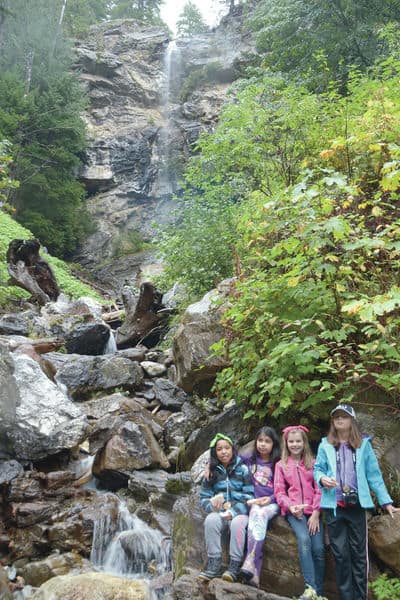
“It’s the perfect setting,” Kiser said. “You can see the valley and the mountains and they can see where this watershed gets its start. It’s really fantastic.”
Along the trail to the falls, instructor Max Thomas stopped, taught and questioned. He asked the students what they noticed?
Raised hands were followed by such observations as tall trees in the upper valley and along the sides.
Why do you think this is, he asked?
Answers ranged from glaciers to avalanches to raging runoff.
“Those are all great observations,” he said. “Now ask yourself, ‘Why is that area so open? What is it about that spot?’”
As the students pondered those questions, they walked on.
Stopping at the base of a large slide, Thomas raised more questions. What happened here? What could have caused this?
Then a pica made itself visible. The tiny member of the rodent family raced between the rocks.
“They are like a baked potato with fur,” said Thomas. “They are little farmers. They roll grasses into tiny barrels and then store them in dry areas for eating during the winter.”
Reaching the waterfall, the group had lunch.
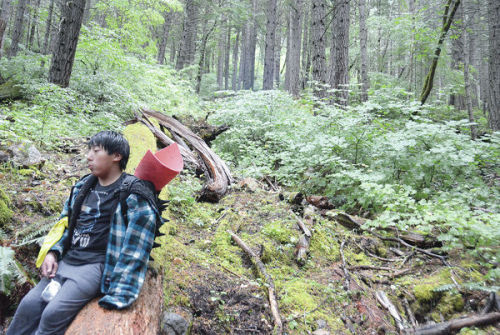
Thomas said Mountain School is about kids having fun, and learning to analyze not only their surroundings but themselves. There is the added benefit of being outside.
“There are never two days that are the same when you work with kids,” Thomas said. “That is what keeps it exciting. Walking along the trails, they observe everything. You have to imbibe that. If you look over there, you can see kids putting a leaf in the water, then watch it as it goes downstream. That’s what kids do and it’s great.”
Sitting on a rock below the falls was 11-year-old Ben Hedberg. His father Tim was along as a chaperone.
“It’s been a lot of fun,” said Ben Hedberg. “We have learned a lot. How the glaciers came down and took everything with them. I really like the outdoors. The beauty of this area is awesome. It’s nice to be able to come out here with my class and it’s nice to have my dad along.”
Classmate Ashton Hall was enjoying the outdoors as he ate a sandwich.
“It’s pretty cool,” he said. “I like to camp and be outside. It’s a lot better than sitting in class. Class can get boring. This is a lot of fun.”
Trejo wasted no time rattling off the trees she’d seen, including paper birch, Douglas fir and maple. And then there were the ferns.
“There are so many ferns,” she said. “I think we’ve seen more ferns than just about anything else. It’s quite a hike to get up here, but it is worth it. And being able to sleep over with your friends, it is so much fun. I have really been looking forward to this field trip.”
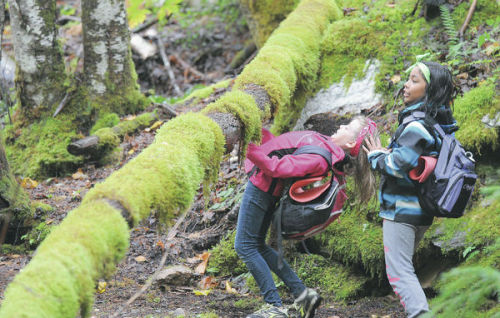
Originally published in the Skagit Valley Herald, October 29, 2014
All photos by Vince Richardson.

